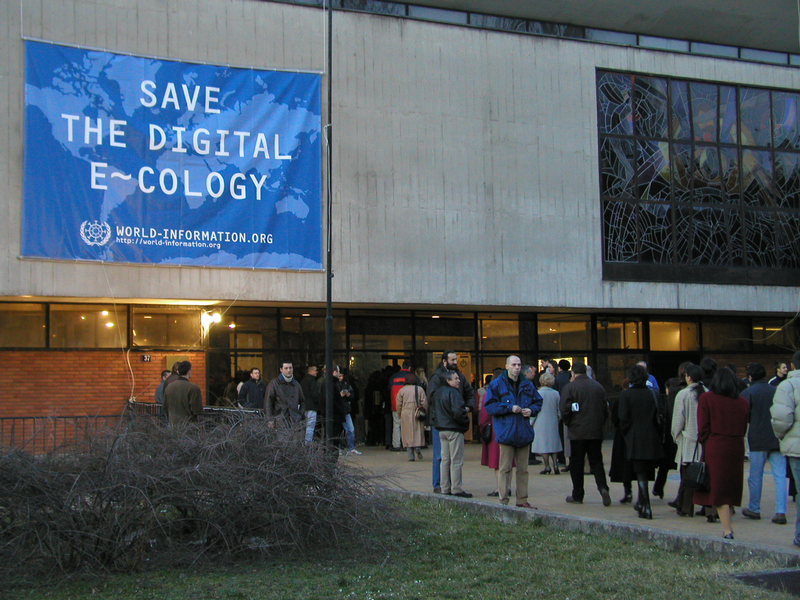The first question we need to ask ourselves when faced with the apparently coherent expression “community art” is what exactly motivates this coherence – is it internal, or have these two terms been put together with the purpose of an external gain? Well, since ‘community art’ is nothing but the late 20th century’s development of ‘contemporary art’, a concept belonging entirely to the western knowledge system, one only need to remember that ‘art’ in this system can no longer be thought of outside the ‘artworld’ and ‘com- munity’ is something which this system has feigned to build ever since it factually dismantled it in the 16th century when the west became modern and capitalist. 1
‘Community art’ brings together 2 terms which function in the realm of illusion and which read in this agglutination as: a practice imposed upon a fantasized social construct, claiming to act not in the subjective realm, whose ultimate purpose is to integrate the artworld through a route other than the gallery. Not only cancommunity art suck up developmental funding which object-making art cannot, it can also be included in the biennial & museum circuit without having to go through the potentially painful, even though by now almost extinct, validation system of critics & peers. In 99% cases, community art is good. It empowers, it develops. Even though I argue for non-criticism or post-criticism in the Latourian sense, community art is really a vicious understanding of that ontology.
Community art is, as suggested above, a staple of western artists. I have been invited to attend several such projects in the past few years. Each time I was taken to some god forsaken town in a superrich Northern country where the flight cost 4 times my salary. Once there, I was asked to produce original knowledge together with a bunch of Berlin artists/critics/flâneurs with the purpose of impacting the local community. I felt like I wanted to quit my job and go and actually live in a forest. What a waste of money and how much hypocrisy. I would never accept such an invitation again. Unfortunately, non-western artists and organisations have picked up the practice, aided by the existence of developmental funds in the periphery and are currently not much better off than their western brothers and sisters. Think of all the artists who go and record the struggle or even suffering of a people, spend time in the region, make friends with the locals and affect a long-term relationship only to get more ‘sincere’ images and then go and exhibit the result in white cubes in the capital. Even if ‘community art’ does not involve image making – or, say, the purpose isn’t to make images of any kind, but to develop some forgotten local craft or rebuild some lost connection between people and people or people and nature etc. – still some documentation is produced and it is ultimately that which reaches the larger public. These records usually build and sustain the illusion of a community delimited in space and time through gestures, physical aspect and architectural patterns, highly static in terms of values and beliefs, the perfect backdrop for creative gestures. By the time this image is publicly displayed, the artists have shifted to a different project, marking yet again the impossibility of the political to emerge in an artistic system. Ultimately, the artworld is political only in the sense that symbolic and financial capital is played out within it, therefore any artistic gesture can only be read in terms of its subsumption to this set of processes and the values they carry – contrary to what many in the artworld may say, that is the only correct reading of the expression ‘all art is political’.
So I am not impressed with community art at all. In fact, the creation of such an expression to designate a set of highly problematic practices strikes me as the shrewd tactics of the artworld to tap into some of the last spaces resisting western metaphysics, i.e. global financial capitalism. This was exactly the kind of observation that lead to another controversial idea back in the 60s: ‘every man is an artist’. I think that the kind of effort that went into proving that Beuys and the like were nothing but idealists and conspirationists and were, in fact, problematic (in cases like this, the passive-aggressive intention behind the word is of utmost importance), is only paralleled by the speed with which their ideas were turned into profitable design methods and experimental curricula in overpriced art schools. Yet I think one should take the example of these idealists and look at shamans and witches rather than artists if one wants to regain faith and develop practices which have a meaning for at least one other person except themselves. I don’t know if communities even exist, but creating a real connection with another person is something most people might not even achieve during their lifetime. So I would start there – and see whether the work does or doesn’t require a hashtag.
Cristina Bogdan is a researcher, curator, editor and lecturer.
1 On this question, see Silvia Federici’s Caliban and the Witch: Women, The Body, and Primitive Accumulation (Autonomedia, 2004).







